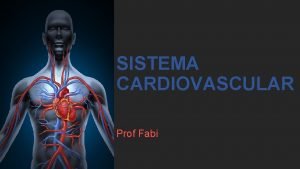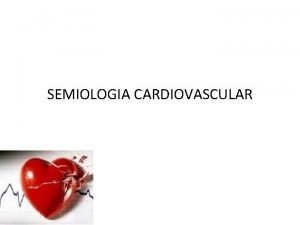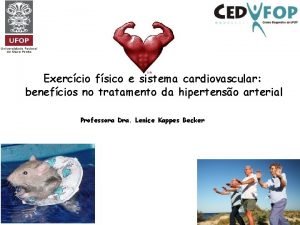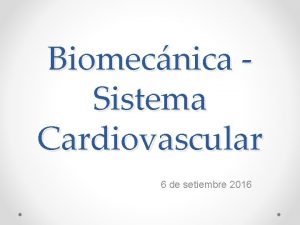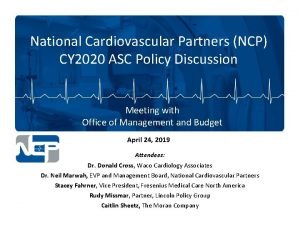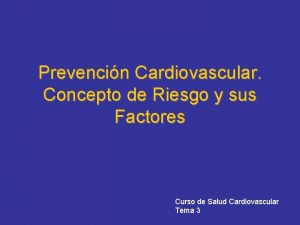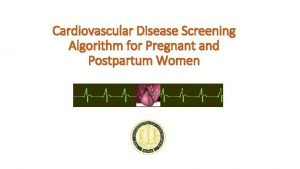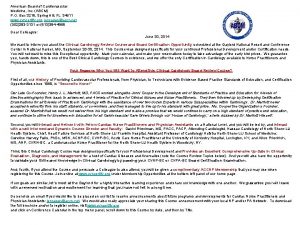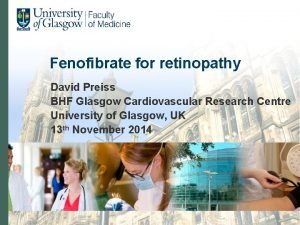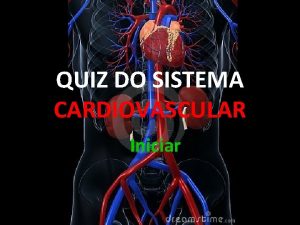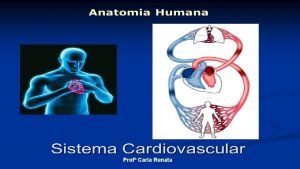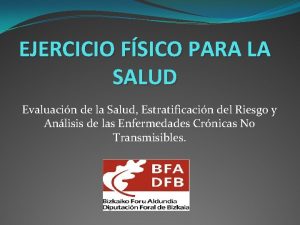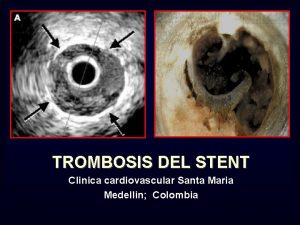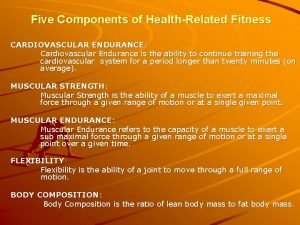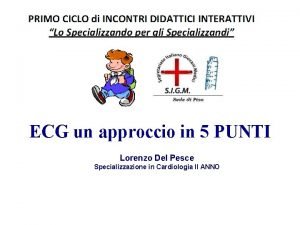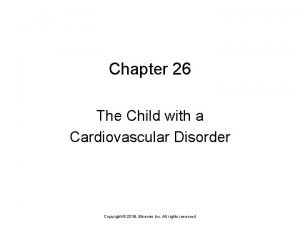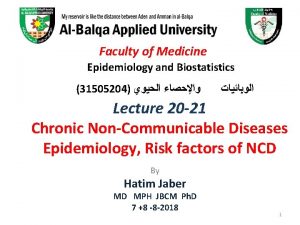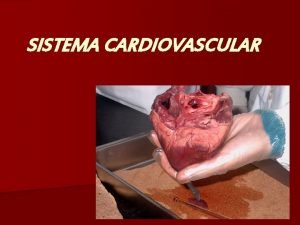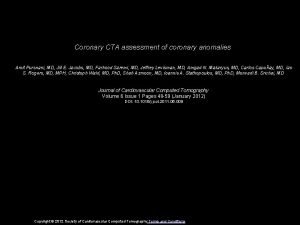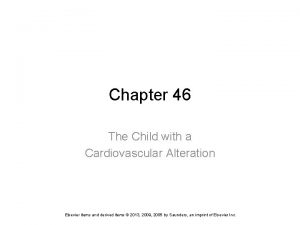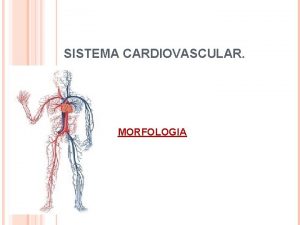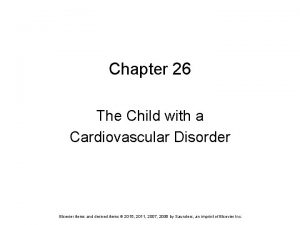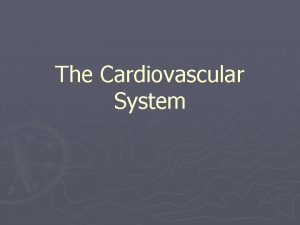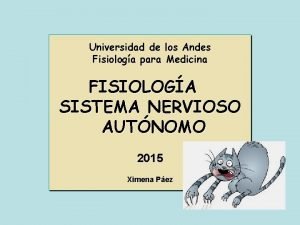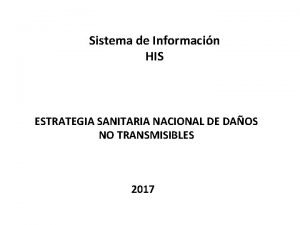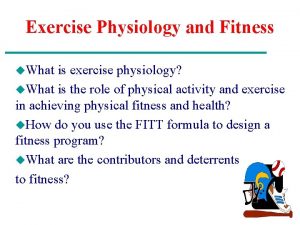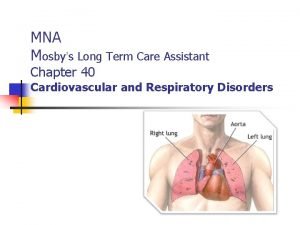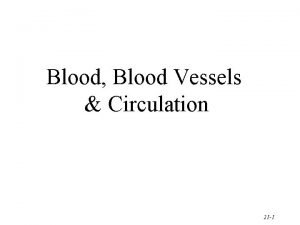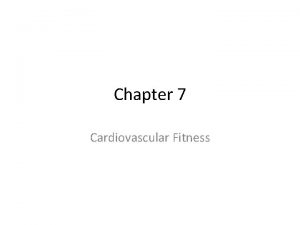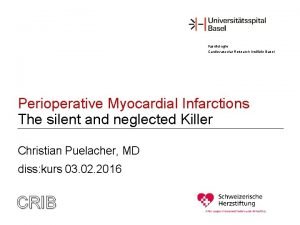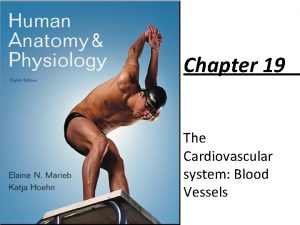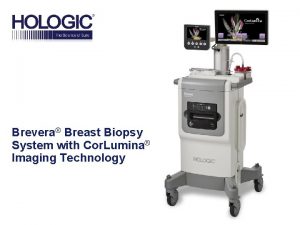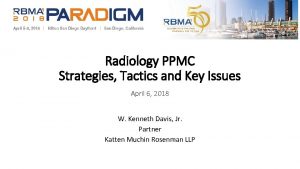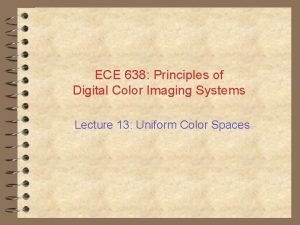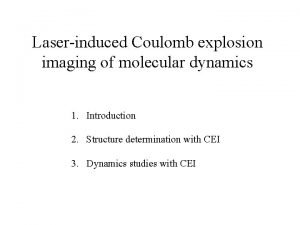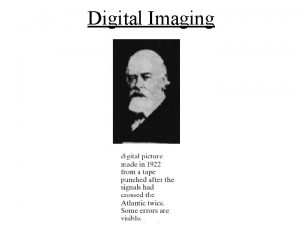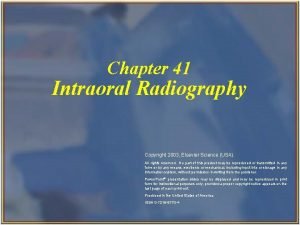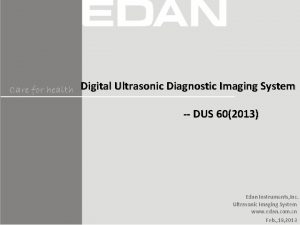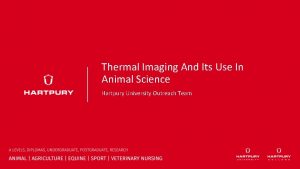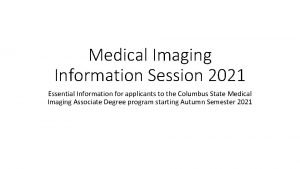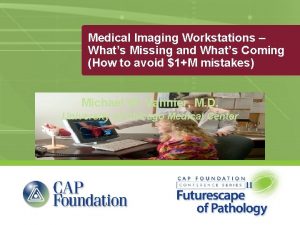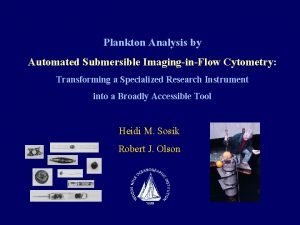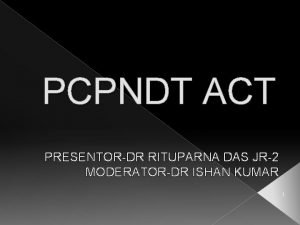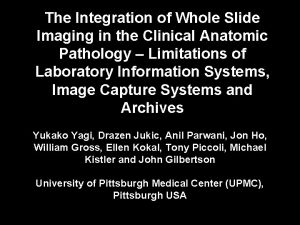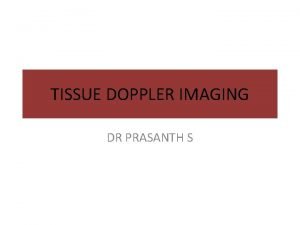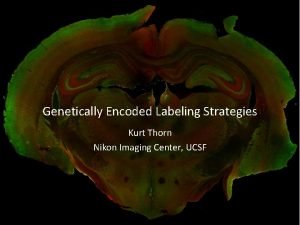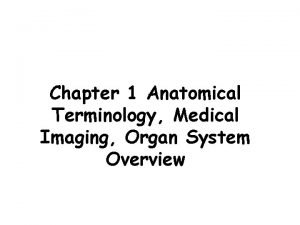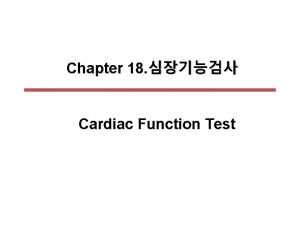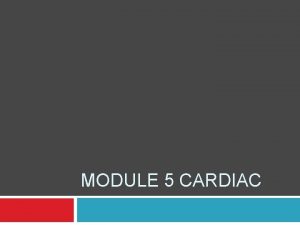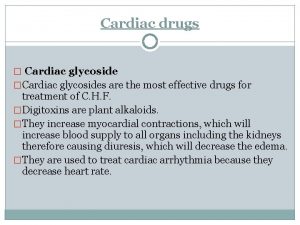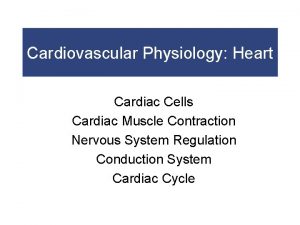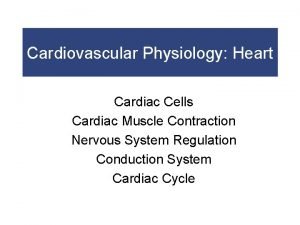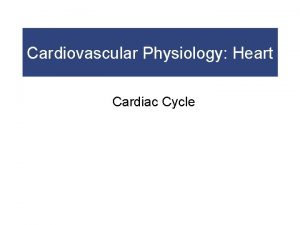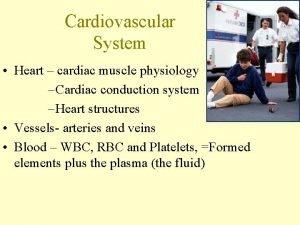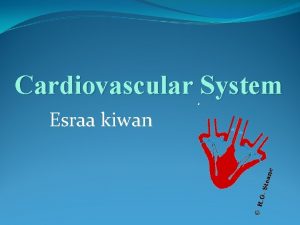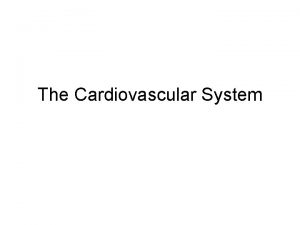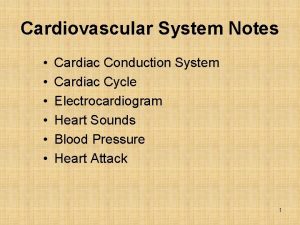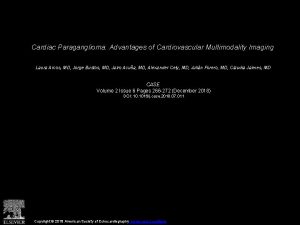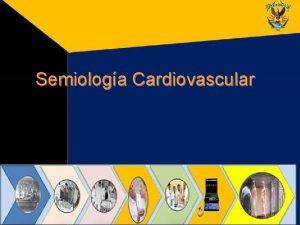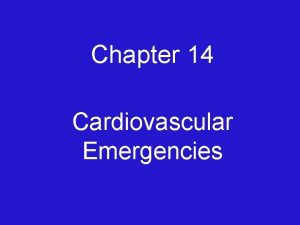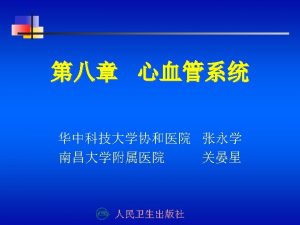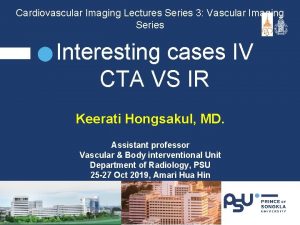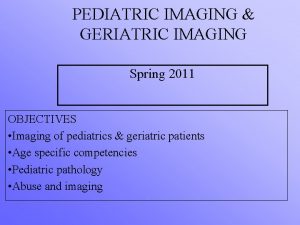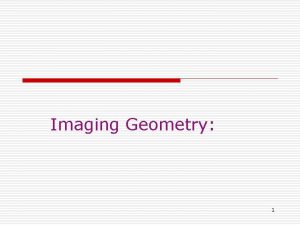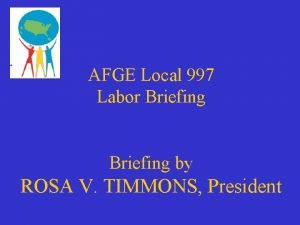RC 997 Essentials of Cardiovascular Imaging Cardiac MR

















































































- Slides: 81

RC 997: Essentials of Cardiovascular Imaging Cardiac MR Imaging: What You Need to Know David A. Bluemke, M. D. , Ph. D. Associate Professor, Clinical Director, MRI Departments of Radiology and Medicine Johns Hopkins University School of Medicine Baltimore, Maryland

Disclosures • Off-label: gadolinium MR of the heart and vessels, adenosine MRI • Research support: Epix Medical • Consultant: Bracco, Berlex • Speaker: Toshiba, GE Healthcare

Essentials of Cardiac MRI • MRI cardiac pulse sequences • Evaluation of myocardial masses • Evaluation of coronary heart disease • Evaluation of the right ventricle

Pulse sequences for cardiac MRI* Purpose Type Sequence morphology Black blood T 1, T 2 function cine double IR FSE/TSE steady state free precession (SSFP) tissue characterization gadolinium IR prepared gradient echo *”all” are gated to the cardiac cycle

“Double IR” black blood FSE Breath-hold high resolution, intracardiac detail • “T 1” weighted, where TR = 1 R-R interval • PD (TR 1000, TE 20), T 2 weighted (TR 2000, TE 80)

“Double IR” FSE: 1 st inversion pulse nonselective 180° inversion pulse

“Double IR” FSE: 2 nd inversion pulse 2 nd selective 180° inversion pulse

“Double IR” FSE: wait for the TI time • The inversion time for blood varies based on heart rate, from 400 -600 msec • If gadolinium present, use TI 200 msec

“Double IR”: null blood TI = 600 msec, inflowing blood now nulled (dark) Perform a gated FSE acquisition

Cine: Steady state free precession (SSFP) -balanced FFE® -Tru. FISP® -Fiesta® Fast GRE (16 sec) ALL THE SAME SSFP (6 sec) Real time SSFP T. Foo

SSFP Cine • fast gradient echo pulse sequence, balanced gradients in x, y, z • Contrast √T 2* / T 1

CINE images Retrospective gating Prospective Trigger continuous trigger on Rimaging wave, through cardiac for arrhythmias cycle

Imaging planes HLA short axis VLA 5 chamber

Essentials of Cardiac MRI • MR cardiac pulse sequences • Evaluation of myocardial mass • Evaluation of coronary heart disease • Evaluation of the right ventricle

Metastatic disease 20 x more common than primary cardiac tumors T 2 Leiomyosarcoma metastasis

Primary benign tumors: 1. Myxoma 41% 2. Lipoma 14% 3. Papillary fibroelastoma 13% 4. Rhabdomyoma 11%

Myxoma T 1 • interatrial septal attachment • 4: 1 left vs. right sided T 2

Myxoma • high T 2 signal

Lipomatous atrial septal hypertrophy T 1 fat sat • echogenic mass on echocardiogram • low association with arrhythmia, obesity

Right atrial lipoma T 1 fat sat • • T 1 High fat T 1 sat signal is diagnostic mass, well defined • • Associations: DDx: clot, proteinaceous obesity, steriod fluid, usemelanoma

T 1 SSFP Crista terminalis • normal RA finding, may be confused with clot or mass

Crista terminalis • Smooth ridge within the right atrium • Related to embryonic development of the right atrium

Primary malignant tumors: 1. Angiosarcoma 31% 2. Rhabodmyosarcoma 20% 3. Other sarcoma 16% 4. Mesothelioma 15% 5. Primary Lymphoma 6%

62 yo female, CHF and abnormal CT

CHF, soft tissue mass by CT Axial T 1 Axial T 2, fat sat

CHF, soft tissue mass by CT: angiosarcoma

Essentials of Cardiac MRI • MR cardiac pulse sequences • Evaluation of myocardial mass • Evaluation of coronary heart disease • Evaluation of the right ventricle

Myocardial Enhancement (MDE) Coronary Delayed Heart Disease, wall motion abnormality Delayed washout (@10 -20 min) of gadolinium in areas of infarction/scar. Gad, T 1

Non viable Myocardium (scar) 1. Lack of contraction, and 2. Lack of recovery of normal function after revascularization (CABG). Gad, T 1

Chronic MI • Images every 1 minute after gadolinium injection M. Friedrich, AHA 2002

Use an inversion pulse to suppress normal myocardium • Optimal TI time depends on clearance of gadolinium from the normal myocardium • Typical range: 175 -250 msec • Lower TI time when more gad is present: - decreased renal function - CHF

“TI Scout” Single breath-hold, 50 phases, 20 msec temporal resolution

“TI Scout” Images every 20 msec

Phase Sensitive Inversion Recovery Magnitude Reconstruction TI 100 150 200 250 Phase Sensitive Reconstruction TI 100 150 Arai, AHA 2002

Key factor: transmurality of the gadolinium enhancement 25 -50% 50 -75% 100% Kim et al. NEJM 2001: 343

MRI is higher resolution than SPECT TTC MRI SPECT Canine model Wagner A. et al. , Lancet. 2003 Feb 1; 361(9355): 374 -9

MRI is more sensitive than SPECT TTC MRI SPECT Wagner A. et al. , Lancet. 2003 Feb 1; 361(9355): 374 -9

MR Viability imaging aids in pre-surgical planning SSFP short axis Gad- delayed

Left ventricular remodeling after MI reduces effectiveness of contraction

Hibernating myocardium: MR Viability imaging aids in bypass surgery or stent pre-surgical planning Gadolinium viability images

Coronary Heart Disease 1. No delayed enhancement = no myocardial scar/ fibrosis. 2. Transmural delayed enhancement = no functional recovery even after treatment by bypass or stent.

Coronary Heart Disease: Acute coronary blockage (infarct) • Initially, there is myocardial necrosis (cell death) than enhances with gadolinium. • If the blockage is not rapidly opened and the patient survives, the capillary blood supply may also be damaged.

Q-Wave Acute MI • Images every 1 minute after gadolinium injection • Capillary blockage is termed “microvascular obstruction” images every 1 minute after gadolinium M. Friedrich, AHA 2002

Acute infarct with microvascular obstruction (at the infarct core) 1 st pass image 25 sec Filling in Infarct 40 sec 10 min

Acute LAD infarction 1 st pass delay

Microvascular Obstruction (MO) MO predicts significantly increased rate of cardiovascular complications after MI (unstable angina, reinfarction, CHF, embolic stroke, death). Wu KC, et al. Circulation 1998; 97: 765 -772

Microvascular Obstruction (MO) NO MICROVASCULAR OBSTRUCTION Wu KC, et al. Circulation 1998; 97: 765 -772

Examples: Coronary Heart Disease

New onset CHF pseudoaneurym (rupture) vs. true aneurysm

True LV aneurysm + clot due to old infarct

EF LV 9% aneurysm/ and clot LVinfarct volume 820 ml

Hibernating Myocardium 16%EF

Delayed Enhancement is nonspecific • Fibrosis (MI, hypertrophy) • Tumor • Inflammation – myocarditis • Amyloid • Chagas disease (fibrosis) • Sarcoid

Hypertrophic Cardiomyopathy (HOCM) • Most common cause of sudden cardiac death <30 yrs old • Obstruction of outflow tract • Genetic abnormality: sarcometric contractile proteins • Autosomal dominant

HOCM - pathophysiology © Mayo Clinic Systolic anterior motion of the mitral valve, resulting in aortic outflow obstruction

HOCM: MRI shows collagen deposition associated with “myocardial disarray” Cine Delayed contrast

2 mths Post Treatment Pre Treatment HOCM: minimally invasive Rx (Et. OH) Wu et al. , Johns Hopkins

Acute Onset Ventricular Tachycardia, Acute Myocarditis (courtesy, Malaise J. Freeby, MD) Fever, Patchy epicardial enhancement, noncoronary distribution

Prior Myocarditis with midwall 25 yo, acute chest pain 2 mosscar ago

Cardiac Sarcoidosis Patchy myocardial enhancement, especially septal/ basal/ epicardial regions Acute Sarcoidosis: Hunold, J. Barkhausen, AJR 2005; 184

Progressive RV failure Giant Cell Myocarditis

Essentials of Cardiac MRI • MR cardiac pulse sequences • Evaluation of myocardial masses • Evaluation of coronary heart disease • Evaluation of the right ventricle

Arrhythmogenic right ventricular dysplasia/ cardiomyopathy (ARVD/C) • MRI is the most important noninvasive imaging test for diagnosis. • 71% of cases referred for 2 nd opinion were overdiagnosed by MRI* (? high sensitivity, low specificity) *Bomma et al, J Cardiovasc Electrophysiol 2004; 15

Arrhythmogenic RV Dysplasia • Fibrofatty infiltration of RV resulting in ventricular tachycardia • Palpitations, syncope, sudden death • Age 33 ± 14 yrs. • 30 -50% cases are familial. MRI used to screen family members.

“Mc. Kenna” Criteria: 2 major, 1 major+2 minor, 4 minor* Br Heart J 1994: 71

ARVD MRI Diagnostic Findings 1. Abnormal RV morphology 2. Abnormal RV function 3. Abnormal signal intensity (fat) 4. Enhancement in the RV wall (fibrosis)

Bluemke et al. , Cardiology, 2003: 99; 153

ARVD: findings on axial images Aortic valve level Mid ventricular level 38 yo F, athlete with ventricular tachycardia

RV enlargement: differential diagnosis in the setting of suspected ARVD 1. Normal variant (young age) 2. Pulmonary Hypertension 3. PAPVR 4. Intracardiac shunt or valve dysfunction

RV and Pulmonary outflow tract enlarged, poor function

Right ventricular aneurysm Typical ARVD

37% of normal volunteers

Tissue Characterization: RV fat

Right ventricle fat


Fat alone is insufficient for ARVD/C diagnosis: not arrhythmogenic LV EF 68. 5% RV EF 71% EDV 120 ml EDV 124 ml

Detection of RV fibrosis in ARVD • Delayed enhancement due to fibrosis present in 60% of ARVD patients. • All patients had other RV abnormalities (wall motion, morphology). Tandri, JACC 2005; 45

RV delayed enhancement *ICD, investigational

RV delayed enhancement

Essentials of Cardiac MRI • MR cardiac pulse sequences • Evaluation of myocardial mass • Evaluation of coronary heart disease • Evaluation of the right ventricle www. heart. MRI. com

Acknowledgments • João Lima, MD • Matthias Friedrich, MD • Dara Kraitchman, Ph. D • Andrew Arai, MD • Tom Foo, Ph. D • Carlos Rochitte, MD • Kathy Wu, MD
 Hasil dari cos 450° + sin (-225°)
Hasil dari cos 450° + sin (-225°) Parte de andamios
Parte de andamios Frc control system
Frc control system Veias
Veias Aparato cardiovascular
Aparato cardiovascular Coronary circulation of heart
Coronary circulation of heart Anatomy and physiology unit 7 cardiovascular system
Anatomy and physiology unit 7 cardiovascular system Semiologia aparato cardiovascular
Semiologia aparato cardiovascular Tissues in circulatory system
Tissues in circulatory system Exercício fisico
Exercício fisico Chapter 11 the cardiovascular system figure 11-3
Chapter 11 the cardiovascular system figure 11-3 Sistolw
Sistolw Chapter 17 cardiovascular emergencies
Chapter 17 cardiovascular emergencies Introduction of cardiovascular system
Introduction of cardiovascular system National cardiovascular partners
National cardiovascular partners Salud cardiovascular
Salud cardiovascular Cmqcc cardiovascular toolkit
Cmqcc cardiovascular toolkit American board of cardiovascular medicine
American board of cardiovascular medicine Bhf glasgow cardiovascular research centre
Bhf glasgow cardiovascular research centre Sistema cardiovascular quiz
Sistema cardiovascular quiz Desenho da pequena circulação
Desenho da pequena circulação Atraumatic tip
Atraumatic tip Cengage learning heart diagram
Cengage learning heart diagram Estratificacion de riesgo cardiovascular acsm
Estratificacion de riesgo cardiovascular acsm What makes up the cardiovascular system
What makes up the cardiovascular system The cardiovascular system chapter 11
The cardiovascular system chapter 11 Clinica cardiovascular santa maria
Clinica cardiovascular santa maria Figure 11-2 is an anterior view of the heart
Figure 11-2 is an anterior view of the heart Chapter 11 the cardiovascular system figure 11-2
Chapter 11 the cardiovascular system figure 11-2 Chapter 13 cardiovascular system
Chapter 13 cardiovascular system What are the components of fitness?
What are the components of fitness? Its tubular dude
Its tubular dude Grade 7 physical fitness
Grade 7 physical fitness Life
Life True capillaries
True capillaries The child with a cardiovascular disorder chapter 26
The child with a cardiovascular disorder chapter 26 Cardiovascular disease risk factor
Cardiovascular disease risk factor Grande e pequena circulação
Grande e pequena circulação Journal of cardiovascular computed tomography
Journal of cardiovascular computed tomography Chapter 46 the child with a cardiovascular alteration
Chapter 46 the child with a cardiovascular alteration Cardiovascular system diseases and disorders chapter 8
Cardiovascular system diseases and disorders chapter 8 Sistema digestivo
Sistema digestivo Rias en salud
Rias en salud Lesson 11 cardiovascular system
Lesson 11 cardiovascular system Chapter 19 cardiovascular system blood
Chapter 19 cardiovascular system blood Chapter 26 the child with a cardiovascular disorder
Chapter 26 the child with a cardiovascular disorder The cardiovascular system includes the
The cardiovascular system includes the Rosita rodriguez
Rosita rodriguez Cardiovascular drift
Cardiovascular drift Salud cardiovascular
Salud cardiovascular Neuronas sensoriales
Neuronas sensoriales Riesgo cardiovascular por perimetro abdominal
Riesgo cardiovascular por perimetro abdominal Wolters kluwer
Wolters kluwer Fitt formula definition
Fitt formula definition The assistant chapter 40
The assistant chapter 40 Blood vessels
Blood vessels Chapter 7 cardiovascular fitness
Chapter 7 cardiovascular fitness Isgemiese hartsiekte
Isgemiese hartsiekte Pithed rat model
Pithed rat model Cardiovascular system
Cardiovascular system Lesson 11 cardiovascular system
Lesson 11 cardiovascular system Sistole
Sistole True capillaries
True capillaries Hologic brevera
Hologic brevera Ppmcs
Ppmcs Digital color imaging
Digital color imaging Windows imaging component
Windows imaging component Coulomb explosion imaging
Coulomb explosion imaging Nait tag placement
Nait tag placement Digital images definition
Digital images definition Imaging biomedico
Imaging biomedico Too much vertical angulation results in images that are:
Too much vertical angulation results in images that are: Digital ultrasonic diagnostic imaging system
Digital ultrasonic diagnostic imaging system Do reptiles show up on thermal imaging
Do reptiles show up on thermal imaging Cscc medical imaging
Cscc medical imaging Conclusion of marginalization
Conclusion of marginalization Imaging flow cytobot
Imaging flow cytobot Ishan imaging centre
Ishan imaging centre Whole slide imaging
Whole slide imaging Tissue doppler imaging
Tissue doppler imaging Ucsf nikon imaging center
Ucsf nikon imaging center Medical imaging
Medical imaging



